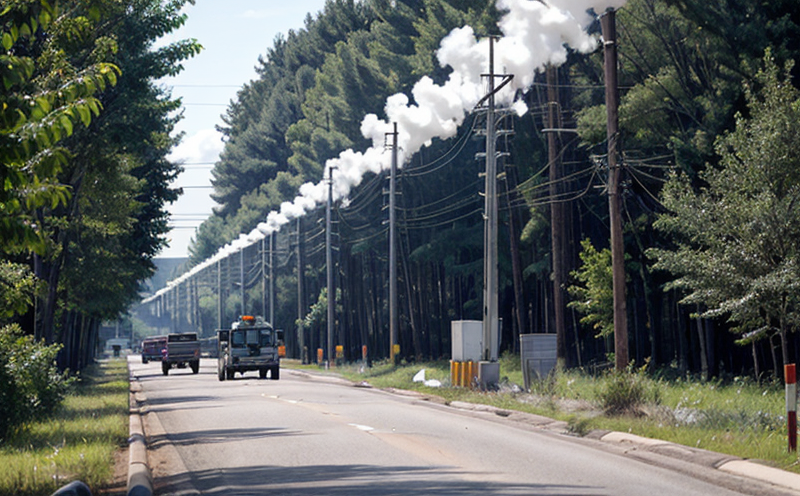ASTM E3053 Biogenic Carbon Testing in Utility Fuels
The ASTM E3053 standard provides a method to determine the proportion of biogenic carbon content in utility fuels. This is essential for utilities aiming to meet regulatory compliance and sustainability goals, especially as the focus on renewable energy sources grows.
Understanding biogenic carbon is crucial because it helps differentiate between fossil fuel emissions and those derived from biomass or other organic materials. This differentiation allows utilities to accurately report their greenhouse gas (GHG) emissions under various regulations, such as the California Air Resources Board's Cap-and-Trade program or the EU’s Emissions Trading System.
Biogenic carbon refers to carbon that has been sequestered in biomass and released again through biological processes. For example, burning wood from a forest that was recently harvested would release biogenic carbon rather than fossil fuel carbon which is considered "ancient" carbon and contributes more significantly to global warming when released into the atmosphere.
The ASTM E3053 method uses a combination of stable isotopes (such as carbon-13) in conjunction with other chemical analyses. The process involves extracting the volatile organic compounds from the fuel sample, followed by isotope ratio mass spectrometry analysis to determine the proportion of biogenic versus fossil carbon.
The significance of this test lies in its ability to provide accurate data for utilities that use mixed feedstocks or blends of different types of fuels. This ensures transparent and verifiable reporting on their environmental impact, which is increasingly important as stakeholders demand greater accountability from companies.
Moreover, ASTM E3053 helps utilities comply with stringent emissions regulations by providing precise measurements that can be used to adjust fuel mixtures or sourcing strategies. For instance, a utility might decide to increase its use of biomass-derived fuels if the test indicates higher proportions of biogenic carbon in these fuels.
Another application is in verifying compliance with voluntary sustainability initiatives like the Renewable Fuel Standard (RFS) in the United States. These standards often require utilities to demonstrate that their fuel sources meet certain criteria for biogenic content, which ASTM E3053 can help verify.
The testing process itself involves several steps: first, the sample is prepared by extracting volatile organic compounds using a solvent or other means appropriate for the type of fuel. Then, these extracts are analyzed via mass spectrometry to measure the ratios of carbon isotopes. The results provide a percentage breakdown of biogenic versus fossil carbon content.
- Sample Preparation: Ensuring that all samples are prepared according to ASTM E3053 guidelines is critical for accurate testing.
- Analytical Techniques: The use of stable isotopes like C-13 and advanced mass spectrometry ensures precision in identifying biogenic carbon.
Applied Standards
The ASTM E3053 standard is widely recognized for its accuracy and reliability, making it a cornerstone in the field of environmental compliance testing. This standard ensures that all tests conducted are consistent with internationally accepted protocols.
In addition to ASTM E3053, there are other relevant standards such as ISO 14067:2018 which provides guidelines for quantifying and reporting greenhouse gas emissions from products or processes. These complementary standards help utilities maintain comprehensive environmental management systems that cover all aspects of their operations.
The application of ASTM E3053 in conjunction with other relevant standards ensures that utilities can effectively manage their carbon footprints, contributing to broader sustainability goals within the industry.
Why Choose This Test
Selecting ASTM E3053 biogenic carbon testing is a strategic choice for utilities seeking robust and reliable data on fuel composition. Here are several reasons why this test stands out:
- Regulatory Compliance: Ensures accurate reporting of emissions as required by various regulatory bodies.
- Sustainability Reporting: Provides transparent information for sustainability initiatives and reports to stakeholders.
- Informed Decision-Making: Allows utilities to make informed decisions about fuel sourcing and mixtures based on precise biogenic carbon content data.
- Voluntary Compliance: Helps meet the requirements of voluntary standards like RFS, enhancing reputation and market competitiveness.
Beyond these immediate benefits, choosing ASTM E3053 also contributes to a more sustainable future by supporting initiatives that reduce overall carbon emissions. This aligns with global trends towards cleaner energy sources and reduced environmental impact.
Customer Impact and Satisfaction
- Informed Decision-Making: Customers gain valuable insights into the sustainability of their fuel supply, leading to better-informed procurement strategies.
- Regulatory Compliance: Ensures that customers meet all necessary environmental regulations, reducing legal risks and potential fines.
- Sustainability Reporting: Provides comprehensive data for sustainable reporting initiatives, enhancing corporate social responsibility (CSR) efforts.
- Voluntary Standards: Assists in meeting voluntary standards like RFS, thereby improving market perception and customer trust.
The end result is a more transparent supply chain and higher levels of customer satisfaction. Utilities using ASTM E3053 can demonstrate their commitment to sustainability and environmental responsibility, which is increasingly valued by both internal stakeholders and the public.





